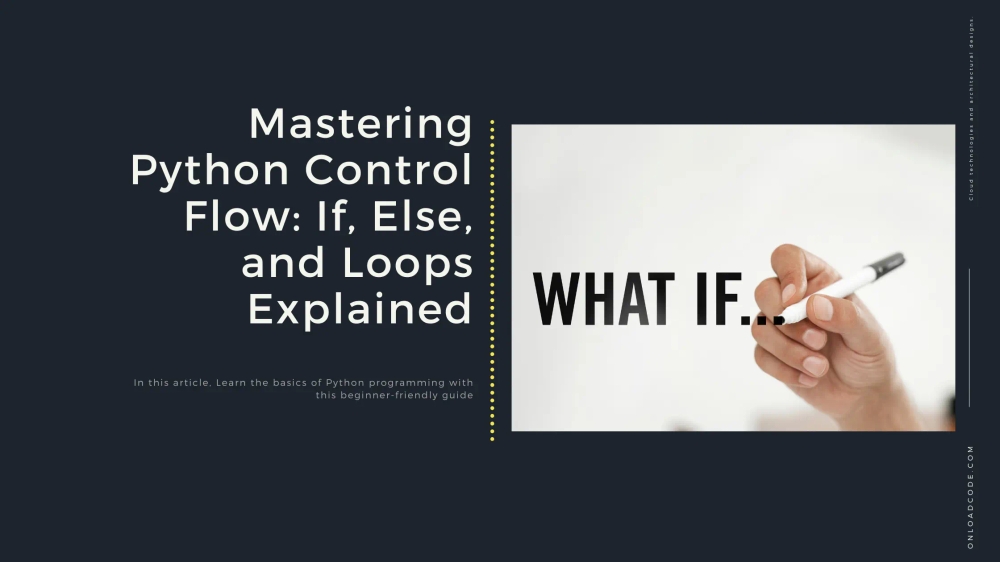Published
- 2 min read
Mastering Python Control Flow: If, Else, and Loops Explained

Mastering Python Control Flow: If, Else, and Loops Explained
Control flow allows Python programs to make decisions and repeat actions. This guide covers conditional statements and loops in Python.
Conditional Statements
If Statement
The if statement allows you to execute code only when a condition is True.
age = 18
if age >= 18:
print("You are an adult.")If-Else Statement
Use else to specify what happens when the condition is False.
age = 16
if age >= 18:
print("You are an adult.")
else:
print("You are a minor.")Elif (Else If)
Use elif to check multiple conditions.
score = 75
if score >= 90:
print("Grade: A")
elif score >= 80:
print("Grade: B")
elif score >= 70:
print("Grade: C")
else:
print("Grade: F")Loops in Python
Loops help automate repetitive tasks.
For Loop
Use for loops to iterate over sequences like lists or strings.
fruits = ["apple", "banana", "cherry"]
for fruit in fruits:
print(fruit)While Loop
Use while loops to repeat a block of code while a condition is True.
count = 0
while count < 5:
print(count)
count += 1Break and Continue
breakexits the loop completely.continueskips the current iteration and moves to the next one.
for num in range(1, 6):
if num == 3:
break # Stops the loop when num is 3
print(num)for num in range(1, 6):
if num == 3:
continue # Skips 3 and continues
print(num)Nested Loops
A loop inside another loop is called a nested loop.
for i in range(3):
for j in range(2):
print(f"i: {i}, j: {j}")Conclusion
Understanding control flow is essential for writing efficient Python programs. Practice using if, else, loops, and flow control statements to strengthen your coding skills.
Quiz Questions
- What is the purpose of an
ifstatement in Python? - How does the
elifstatement differ fromifandelse? - What is the main difference between a
forloop and awhileloop? - What does the
breakstatement do inside a loop? - How can you skip an iteration in a loop without stopping it completely?
